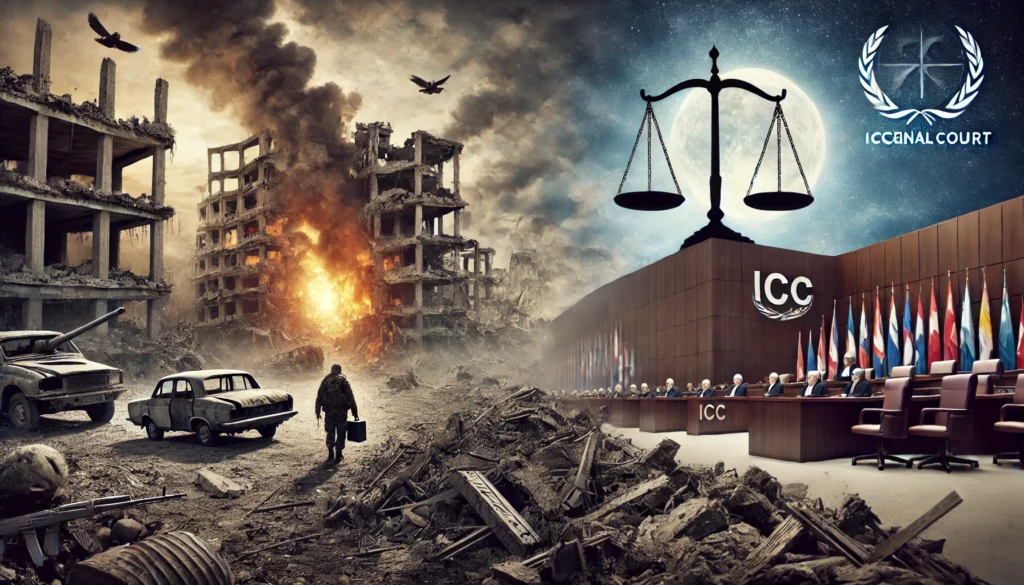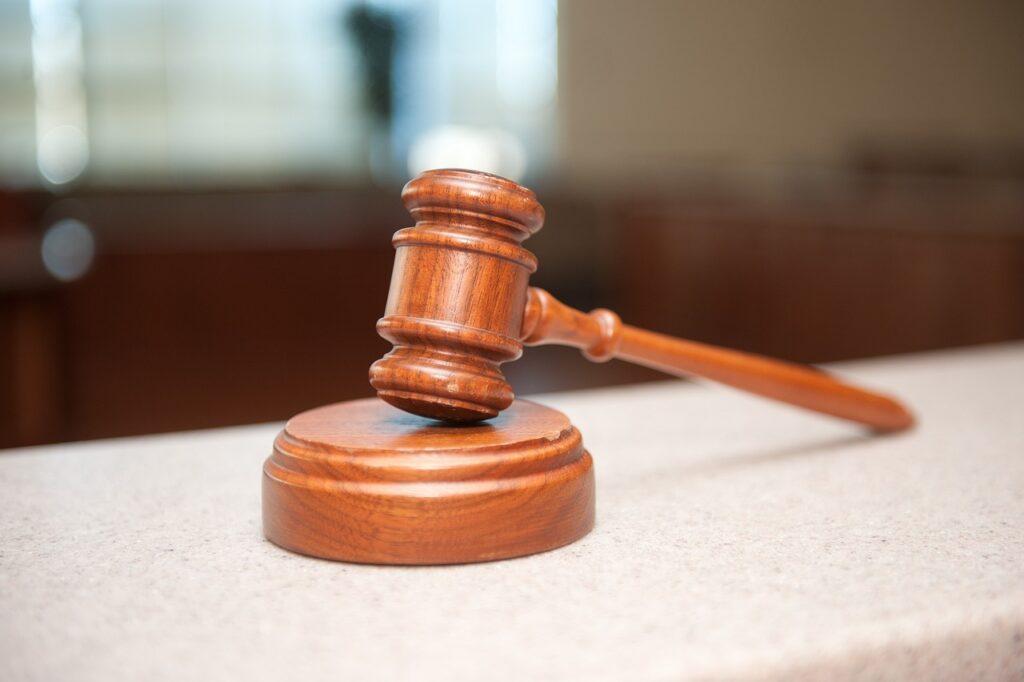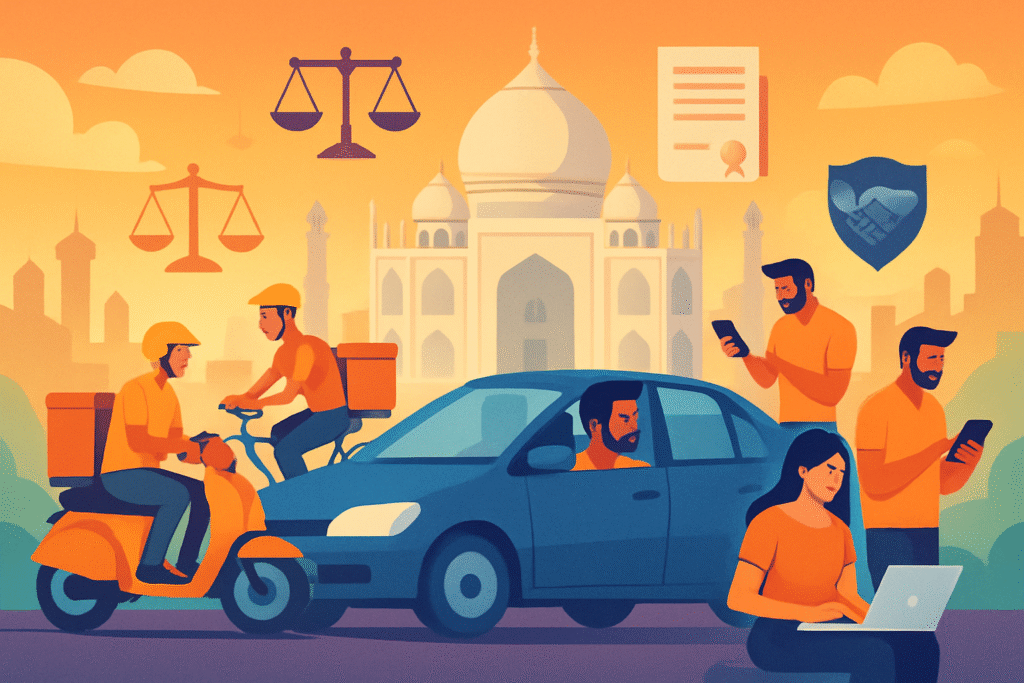Published On: 19th May, 2024

Abstract:
Child abuse encompasses mistreatment or neglect of a child, spanning physical, emotional, sexual, or neglectful harm, irrespective of age or relationship. In India, issues like rape, sexual abuse, and harassment are globally recognized problems of gender violence, yet research remains limited, hindering awareness. However, child sexual abuse is garnering attention, leading to a focus on legal frameworks, victims, and perpetrators. This paper explores sexual abuse against minors, delving into legal and societal complexities, including unique cultural challenges in India. Keywords such as social problems, child welfare, victimization, poverty, and verbal abuse will be central.
Introduction:
In the Indian subcontinent, practices like incestuous marriages among groups like the Baig challenge the notion that no known tribe allows incest. This cultural deviation includes unions between fathers and daughters, mothers and sons, siblings, and even grandparents with grandchildren. Children in such communities transition early from familial incest to living in sex dormitories, where older individuals coerce them into sexual activities with peers. Research in India reveals alarming statistics, with 30% of men and 40% of women recalling childhood sexual molestation, often within the family or under complicit caretakers, typically before puberty, with some distressingly before age 7. Reported rates likely underestimate actual prevalence, with true estimates at 60% for girls and 45% for boys, about half being incestuous. This progression from incestuous abuse towards healthier parent-child relationships reflects societal empathy and love, influenced by each generation’s ability to confront childhood traumas, akin to collective psychotherapy shaping historical changes. Support for parents, especially mothers, nurtures this journey, fostering societal evolution.
Sexual Abuse:
Child sexual abuse, ranging from molestation to exploitation through pornography or prostitution, is a global concern. It varies across cultures, with historical practices like child marriage and ritualized pederasty observed in different regions. Factors contributing to its prevalence include socio-cultural norms and resource allocation. Addressing it demands a comprehensive approach involving prevention, intervention, and support for victims, fostering a safer future for children.
Socio-Cultural:
The theory of child abuse attributes abusive behavior to socio-demographic factors. Social situational factors, cultural norms, and psychiatric explanations influence abuse. Research now favors an “ecology” model, recognizing multiple influences at individual, family, community, and societal levels. In India, child sexual abuse persists due to inadequate laws and enforcement, requiring prioritization of children’s rights protection.
Neglect:
Child abuse and neglect involve deliberate actions or omissions causing harm to children by caregivers or others entrusted with their care, leading to physical, mental, or psycho-social impairment, disability, or death. Children, especially infants, are vulnerable, often suffering more from those closest to them than strangers, encompassing various forms of neglect.
Emotional Abuse:
Child emotional abuse encompasses behaviors hindering emotional development or self-worth, like criticism or withholding love. It often lacks visible signs but may lead to speech disorders or behavioral issues. Causes include poverty, parental history of abuse, strained relationships, and alcoholism. Many abusive parents were victims themselves. (National Clearing-house Information, 2004).
Physical Abuse:
Child abuse signs include unexplained injuries like bruises, inconsistency with age, and discrepancies in explanations. Neglect indicators include poor hygiene and lack of medical care. Working children are at higher risk, of facing harm from employers. Boys are more commonly abused, and mothers often perpetrate physical abuse. Violence may be expressive, instrumental, or child precipitated.
Cause of Physical Abuse:
Social scientists propose various causes for physical abuse, including individual psychopathology, family dynamics, and acute stress. While the abuser’s traits matter, family environment and stress are crucial. NGOs play a vital role but should complement government efforts. Addressing child prostitution needs prevention and rehabilitation, focusing on rural areas. Community action, as seen in Manila and Goa, is promising but challenging. Overall, combating child abuse demands government intervention, NGO support, community engagement, and awareness campaigns for lasting progress in protecting children.
Impact of Child Abuse:
- Short-Term Effects:
- Fear and Anxiety: Children who have experienced abuse live in constant fear, not only of their abuser but also of potential future harm. This fear becomes all-encompassing, leading to hypervigilance where they are constantly on edge, anticipating danger. They may struggle to relax or feel safe in any environment, as the trauma they’ve every aspect of their lives.
- Depression and Sadness: The emotional toll of abuse is immense, often leaving children overwhelmed by feelings of sadness, despair, and hopelessness. They may find it difficult to engage with the world around them, withdrawing socially and emotionally as they struggle to cope with the pain they are experiencing.
- Regression: Coping mechanisms in response to trauma can cause children to revert to behaviors from earlier stages of development. This regression can manifest as bedwetting, thumb sucking, or other behaviors that provide a sense of comfort and security in the face of overwhelming emotional distress.
- Nightmares and Sleep Problems: The trauma of abuse frequently disrupts children’s sleep patterns, leading to nightmares, insomnia, and other sleep disturbances. Even when they do manage to sleep, it may be fitful and unrestful, exacerbating feelings of fatigue and emotional exhaustion.
- Acting Out: Children may struggle to express their pain verbally, leading them to externalize their distress through behaviors such as aggression, tantrums, or defiance. These behaviors serve as a means of communication, signaling their inner turmoil and the need for support and understanding.
- Low Self-Esteem: Abuse undermines children’s sense of self-worth and value, leaving them with deep-seated feelings of inadequacy and self-blame. They may internalize the messages of worthlessness conveyed by their abuser, leading to a pervasive sense of shame and insecurity.
- Difficulty Trusting Others: Betrayal by their abuser can shatter children’s ability to trust others, making it challenging for them to form healthy relationships. They may struggle to believe that others have their best interests at heart, fearing further harm or betrayal if they let their guard down. This mistrust can isolate them further, exacerbating feelings of loneliness and alienation.
Long-Term Effects:
- PTSD: Child abuse significantly heightens the risk of developing Post-Traumatic Stress Disorder (PTSD) in adulthood. Symptoms such as intrusive memories, avoidance of triggers, negative alterations in mood, and heightened arousal persist, severely impacting daily functioning.
- Depression and Anxiety Disorders: The enduring trauma of childhood abuse often leads to chronic depression, anxiety disorders, and other mental health conditions. These conditions can pervade every aspect of life, making it challenging to maintain relationships, employment, and overall stability.
- Substance Abuse: Many survivors of child abuse turn to drugs or alcohol to cope with the emotional pain and distress caused by their traumatic experiences. This coping mechanism can develop into substance abuse disorders, further exacerbating their mental and physical health challenges.
- Self-Harm: Some individuals who have experienced childhood abuse resort to self-harm as a maladaptive coping mechanism. The act of self-injury may temporarily alleviate emotional pain or provide a sense of control, but it ultimately perpetuates a cycle of self-destructive behavior.
- Relationship Problems: Trust and intimacy issues stemming from childhood abuse can significantly hinder the formation and maintenance of healthy adult relationships. Survivors may struggle to establish trust, communicate effectively, or engage in intimate connections, leading to challenges in romantic, familial, and social relationships.
- Emotional Difficulties: Survivors of child abuse often struggle to identify, process, and express their emotions in healthy ways. This emotional dysregulation can manifest as difficulty managing anger, sadness, or fear, leading to interpersonal conflicts and challenges in navigating daily life.
- Physical Health Problems: The chronic stress and trauma experienced during childhood abuse can have profound effects on physical health. Survivors may suffer from frequent headaches, stomachaches, and other psychosomatic symptoms, as well as weakened immune systems due to prolonged exposure to stress hormones.
- Suicidal Thoughts and Behaviors: In severe cases, the trauma of childhood abuse may lead to suicidal ideation and behaviors in adulthood. The overwhelming despair, hopelessness, and emotional pain experienced by survivors can culminate in thoughts of self-harm or suicide, requiring immediate intervention and support.
-
Social and Physical Effects:
Social Effects:
- Difficulties Forming Relationships: Trust issues stemming from childhood abuse hinder the ability to form healthy relationships, as survivors may struggle to open up and establish connections with others.
- Social Isolation: Low self-esteem and fear resulting from abuse often lead survivors to withdraw from social activities, feeling unworthy or fearful of further harm.
- Academic Difficulties: Emotional distress caused by abuse can significantly impact concentration and academic performance, hindering educational attainment and future opportunities.
- Bullying: Children who have experienced abuse may exhibit low self-esteem, making them more vulnerable targets for bullying by their peers.
- Delinquency: Anger issues stemming from unresolved trauma may lead survivors to engage in delinquent or criminal behavior as a maladaptive way of coping with their emotions.
Physical Effects:
- Delayed Growth: Chronic stress resulting from abuse can hinder physical growth and development in children, leading to delays in height, weight, and overall maturation.
- Weakened Immune System: Prolonged exposure to stress hormones can weaken the immune system, making abused children more susceptible to infections and illnesses.
- Chronic Health Problems: The long-term effects of abuse-related stress can contribute to the development of chronic health conditions such as heart disease, diabetes, and asthma, impacting overall well-being and longevity.
- Sleep Problems: Fear, anxiety, and emotional turmoil experienced as a result of abuse often manifest in sleep disturbances, including insomnia, nightmares, and restless sleep.
- Headaches and Stomachaches: Physical symptoms such as headaches and stomachaches are common manifestations of the stress and emotional turmoil endured by abused children, further impacting their physical health and well-being.
-
Impact on Society:
Economic Costs:
- Healthcare Burden: Treating abuse-related physical and mental health issues strains healthcare resources.
- Lost Productivity: Abuse survivors may struggle with education and employment, leading to decreased productivity.
- Increased Crime Rates: Abuse correlates with criminal behavior, raising costs for law enforcement and victim services.
Social Costs:
- Intergenerational Cycle: Abused children are more likely to become abusive parents, perpetuating violence.
- Loss of Potential: Hindered development limits contributions to society, affecting productivity.
- Fear and Distrust: High abuse rates can erode community trust and foster fear.
Additional Impacts:
- Broken Families: Abuse can fracture families, destabilizing homes.
- Strain on Services: Child protection and mental health services face strain in high-abuse communities.
Addressing child abuse is vital for both moral and practical reasons, fostering safer, healthier communities and a more robust future for all.
The Protection of Children from Sexual Offences Act (POCSO Act) and its Key Provisions
Definition of a Child:
Defines a “child” as any person below 18 years, ensuring comprehensive protection for minors.
Offences Covered:
Defines various forms of sexual offences against children, including penetrative sexual assault, sexual assault, harassment, and using pornographic material in the presence of a child.
Gender-Neutral Law:
- Recognizes both girls and boys as victims of child sexual abuse, holding perpetrators of any gender accountable for their actions.
Stringent Punishments:
- Prescribes stringent punishments, with minimum sentences varying based on the severity of the offence and the age of the victim.
- For penetrative sexual assault on a child below 16, the minimum sentence is 20 years imprisonment, extendable to life imprisonment.
- Offences against children aged 16-18 carry a minimum sentence of 10 years.
Special Courts:
– Establishes Special Courts for the trial of POCSO offences to expedite proceedings and minimize trauma for victims.
Reporting Requirements:
– Mandates mandatory reporting of suspected child sexual abuse by anyone in a position of trust or authority, punishable by law if not complied with.
Victim Protection:
– Prioritizes victim protection, ensuring confidentiality, child-friendly procedures, medical assistance, and compensation.
Awareness and Prevention:
– Emphasizes creating awareness about child sexual abuse and promoting preventive measures to combat it.
Existing Support Systems for Addressing Child Abuse in India:
Government Initiatives:
- Ministry of Women and Child Development (MWCD): Formulates and implements policies for child protection, including programs like Integrated Child Development Services (ICDS) and the Childline helpline (1098).
- State Child Protection Units (SCPs): Coordinate child protection efforts at the state level, overseeing Child Welfare Committees (CWCs) and District Child Protection Units (DCPUs).
- Child Welfare Committees (CWCs): Quasi-judicial bodies handling cases under the Juvenile Justice Act (2015) and POCSO Act, providing institutional care for abused children.
Non-Governmental Organizations (NGOs):
– Offer crisis intervention, counseling, legal aid, community outreach, and rehabilitation programs for victims and families.
Other Support Systems:
- Hospitals: Public and private hospitals, with Collaborative Child Response Units (CCRUs) for handling child sexual abuse cases.
- Police: Responsible for investigating and filing charges against perpetrators, though reporting can be challenging.
Challenges and Limitations:
- Limited Resources: Government and non-governmental organization (NGO) resources dedicated to addressing child abuse are often insufficient to meet the needs of all victims and provide comprehensive support. This scarcity of resources can result in long waiting lists for services and limited access to specialized care for abused children and their families.
- Social Stigma: The stigma and societal taboos surrounding child abuse contribute to a culture of silence and shame, preventing victims and their families from speaking out and seeking help. Fear of judgment or retaliation from perpetrators, as well as concerns about tarnishing family reputation, further perpetuate this stigma and hinder disclosure and intervention efforts.
- Lack of Awareness: Limited public awareness about child abuse, including recognition of signs and symptoms, knowledge of legal rights, and awareness of available support services, creates significant barriers to seeking help. Many individuals, including victims, families, and even professionals, may lack the necessary information to identify and respond effectively to instances of abuse.
- Implementation Issues: Despite existing laws and policies aimed at preventing and addressing child abuse, effective implementation remains a challenge. Factors such as inadequate training of professionals, inconsistent enforcement of laws, bureaucratic hurdles, and insufficient coordination among agencies can impede efforts to protect children, hold perpetrators accountable, and provide support to victims and their families.
Various Strategies to Prevent Child Abuse:
- Education and awareness campaigns.
- Strengthening legal frameworks.
- Capacity building for professionals.
- Parenting support programs.
- Child helplines and hotlines.
- School-based interventions.
- Community engagement.
- Economic empowerment initiatives.
- Mental health services.
- Collaboration and coordination among stakeholders.
Conclusion:
In conclusion, addressing child abuse in India requires a multifaceted approach encompassing education, legal reforms, community involvement, and support services. By raising awareness, strengthening laws, and building capacity among professionals, we can better identify and respond to cases of abuse. Parenting support programs and economic empowerment initiatives can help prevent abuse by addressing underlying factors such as stress and poverty. Child helplines, school-based interventions, and mental health services offer crucial avenues for support and intervention. Ultimately, collaboration and coordination among stakeholders are essential to create a protective environment for children and ensure their safety and well-being. By implementing these strategies collectively, we can strive towards a future where every child in India grows up free from the scourge of abuse.





